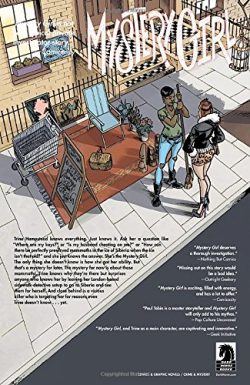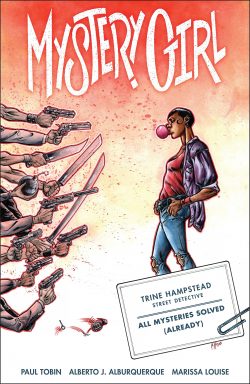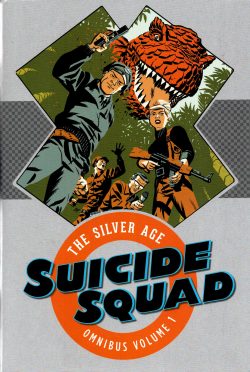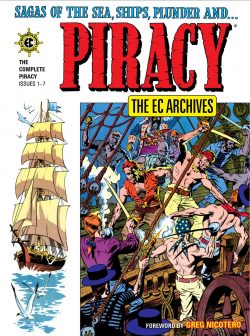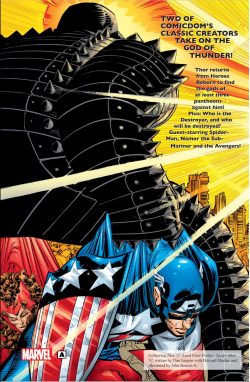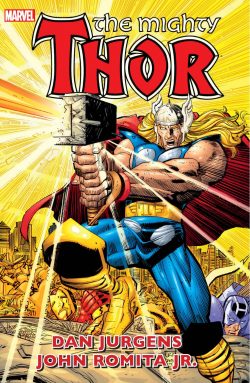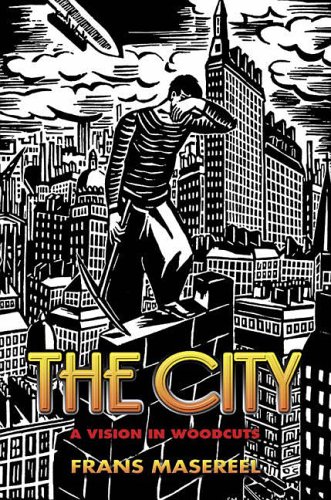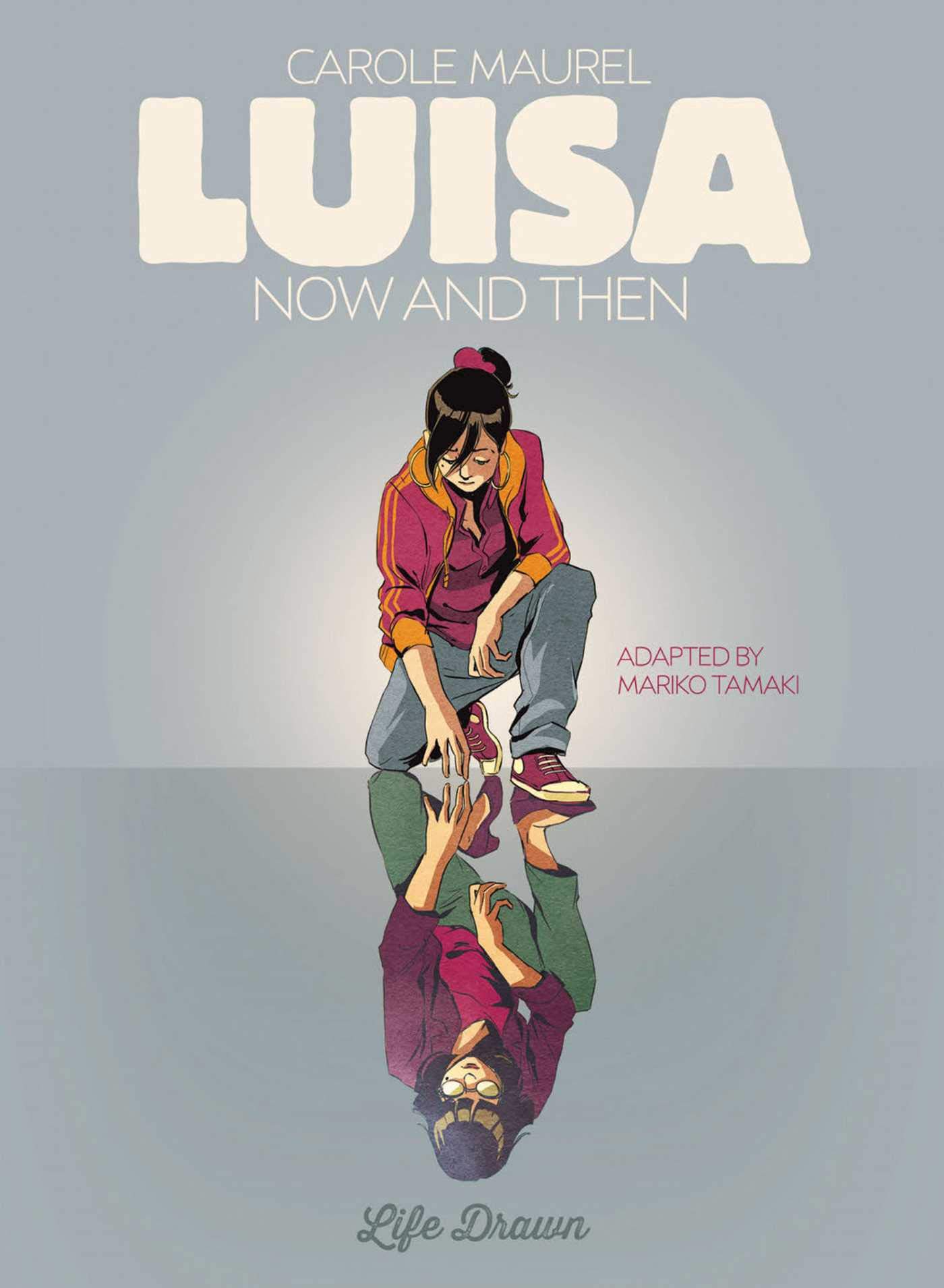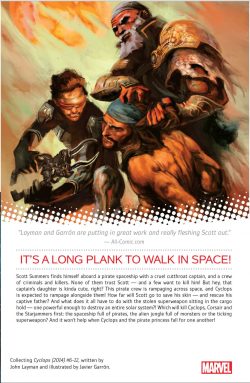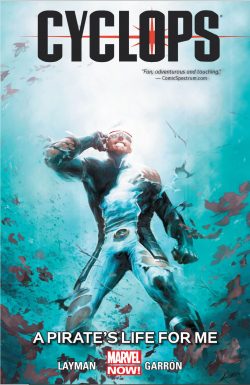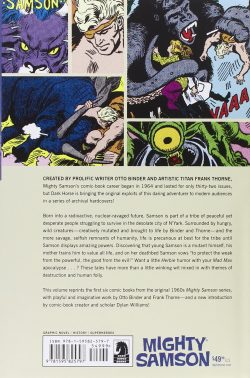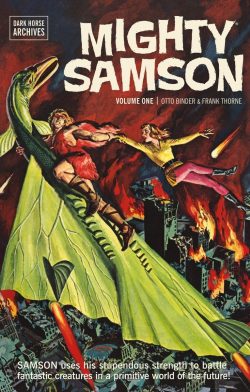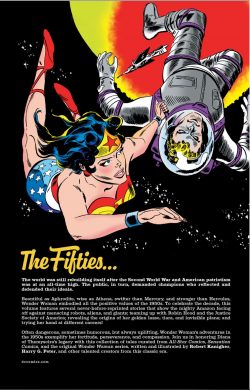
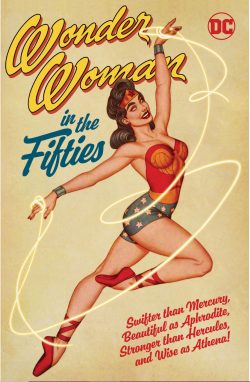
By Robert Kanigher, John Broome, Harry G. Peter, Ross Andru & Mike Esposito, Frank Giacoia, Arthur Peddy & Bernard Sachs & various (DC Comics)
ISBN: 978-1-779507-624-6 (TPB/Digital edition)
In the early years of this century, DC launched a series of graphic archives intended to define DC’s top heroes through the decades: delivering magnificent past comic book magic from the Forties to the Seventies via a tantalisingly nostalgic taste of other – arguably better, but certainly different – times. The collections carried the cream of the creative crop, divided into subsections, partitioned by cover galleries, and supplemented by short commentaries; a thoroughly enjoyable introductory reading experience. I prayed for more but was frustrated… until now…
Part of a trade paperback trilogy – the others being Superman and Batman (thus far, but hopefully Aquaman, Green Arrow and Martian Manhunter are in contention too, as they have become such big shot screen stars these days) – the experiment was recently re-run, with even more inviting samples from the company’s vintage, family-friendly canon.
Gathered here is a menu of deliciously dated delights starring Earth’s most recognisable Female Heroic Ideal, heralded by a time-&-tone-setting Introduction from historian, author and columnist Andy Mangels augmenting each context-stuffed chapter text piece.
With Robert Kanigher as primary writer of record throughout the book, the contents here originated in Sensation Comics #97, 100; Wonder Woman #45, 50, 60, 66, 72, 76, 80, 90, 94-95, 98-105, 107, 108, 750; and All-Star Comics #56, 57 spanning the entire decade whilst attempting to reconcile an indomitable symbol of female emancipation and independence with a post-war world determined to turn them back into docile brood mares and passive uber-consumers…
Wonder Woman was created by polygraph pioneer William Moulton Marston – apparently at the behest of his remarkable wife Elizabeth and their life partner Olive Byrne. The vast majority of the outlandish early adventures were limned by illustrator Harry G. Peter.
The Astounding Amazon debuted in All Star Comics #8 (cover-dated December 1941, and top-selling home of the Justice Society of America) just before launching in her own solo series and cover-spot of new anthology Sensation Comics the following month. She was an instant hit, and gained her own eponymous title in late Spring of that year (Summer 1942).
Using the nom de plume Charles Moulton, Marston & Co scripted all her many and fabulous exploits until his death in 1947, whereupon Kanigher officially took over the writer and editor’s role. The venerable Peter continued until his own death in 1958. Wonder Woman #97 – in April of that year – was his last hurrah and the end of an era.
Supported by a factual briefing, the comics classics commence with The (Many) Origins of Wonder Woman, and the first adjustments to the classic origin tale…
For purposes of comparison, the 1940s saga stated that on a hidden island of immortal super-women, American aviator Steve Trevor of US Army Intelligence crashed to Earth. Near death, he was nursed back to health by young, impressionable Princess Diana.
Fearing her growing obsession with the creature from a long-forgotten, madly violent world, her mother Queen Hippolyte shared the hidden history of the Amazons: how they were seduced and betrayed by men, but rescued by goddess Aphrodite on condition they isolated themselves from the world, devoting their eternal lives to becoming ideal, perfect creatures.
However, when Athena and Aphrodite subsequently instructed Hippolyte to despatch an Amazon with the American to fight for global freedom and liberty and against oppression and barbarism, Diana overcame all other candidates in a brutal open competition to became their emissary – Wonder Woman.
On arriving in America, she purchased the identity and credentials of lovelorn Army nurse Diana Prince, elegantly allowing the Amazon to be close to Steve and the heartsick medic to wed her own fiancé in South America. Diana also joined Army Intelligence as secretary to General Darnell, ensuring she would always be able to watch over her beloved. She little suspected that, although painfully shallow Steve only had eyes for the dazzling Amazon superwoman, the General had fallen for mousy yet superbly competent Lieutenant Prince…
As the decade turned it was deemed time for a refurbished origin and – illustrated by Harry G. Peter – WW #45 (cover-dated January/February 1951) delivered ‘The Wonder Woman Story!’
This found childhood rivals vying for the journalistic kudos of publishing the Amazon’s backstory. However, after a hard-won trip to Paradise Island led to Mary Ellen learning the details of it all – Hercules’s ancient ‘Act of Treachery!’ and how the Princess defied authority for love – all manner of trouble emerged…
Cunning competitor John Lane had bugged Mary’s jewellery and craftily followed her to the Amazon homeland, causing a major upset…
Back then Wonder Woman’s artists were astonishingly faithful and true, staying with her for pretty long hauls. Peter and his uncredited team of female assistants served nearly 20 years before he was let go mere weeks before dying. His replacements Ross Andru & Mike Esposito drew her adventures from 1958 to the middle of 1967 (#98 – 171), and limned this breakthrough tale from WW #105 (April 1959)
The issue debuted Wonder Girl in the ‘‘The Secret Origin of Wonder Woman’, revealing how centuries ago Olympian divinities bestowed unique powers on the daughter of Queen Hippolyta and how – as a mere teenager – the indomitable Diana brought the Amazons to Paradise Island. Continuity – let alone consistency or rationality – were never as important to Kanigher as strong story or breathtaking visuals, and this eclectic odyssey is a great yarn that simply annoyed the heck out of a lot of fans – but not as much as the junior Amazon would in years to come after these teen tales spawned an actual junior Amazon as sidekick to Diana…
That ball started rolling in #107 (July 1959) and proved that the high fantasy exploits of the minor had clearly caught somebody’s editorial fancy. Follow-ups came thick and fast after ‘Wonder Woman Amazon Teen-Ager!’ saw the youngster ensnare an unwanted romantic interest in merboy Ronno, whilst dutifully undergoing a quest to win herself a superhero costume…
Fronted by an article on her legendary kit and illustrated throughout by H.G. Peter, Fashion as Armor: The Equipment List shares some of Kanigher’s frequent and often contradictory exposés on the source and powers of Wonder Woman’s combat gear. It begins with ‘The Secret Story of Wonder Woman’s Lasso!’ (WW #50, November/December 1951), depicting how the princess undertakes three divine tasks to ensure the rope gains magical traits of unbreakability, infinite elasticity and truthful compulsion. Along the way she uses it against crooks, spies, other Amazons, submarines, dinosaurs and a Roc…
That mythological bird, another dinosaur and aliens play a major role in ‘The Talking Tiara!’ (#66, May 1954) as Steve learns how Diana belatedly won possession of her headpiece, a “Linguagraph Tiara” capable of translating any language past present or future, whilst ‘The Secret of Wonder Woman’s Sandals’ (#72, February 1955) reveals some odd characteristics of the footwear as she performs incredible feats (sorry!) to confirm her worthiness…
Cover-dated February 1956 ‘The Origin of the Amazon Plane!’ featured in Wonder Woman #80, recalling a trio of tasks undertaken to collect separated sections of her faithful, invisible robot conveyance before #95 (January 1958) offered ‘The Secret of Wonder Woman’s Tiara!’: this time in the form of a tale told to toddlers, revealing how the hat was a gift from aliens given in thanks for saving them from marauding Phenegs…
Moving on to highlight the Amazon’s noteworthy collaborations, One of the Team offers a trio of tales. The section is a somewhat “Marmite” moment that fans will either love or hate…
The majority of the chapter is devoted to a brace of tales starring the Justice Society of America and, whilst I’m never going to complain about seeing such classics where new readers can discover them, it’s a lot of pages to hand over to a group who had Wonder Woman serving coffee and taking notes as “Club Secretary” for years. At least here, in the last of the original run, she’s graduated to being an leading participant in their adventures…
After the actual invention of the superhero via the 1938 Action Comics debut of Superman, the most significant event in our industry’s history was the combination of individual stars into a like-minded group. Thus, what seems blindingly obvious to us with the benefit of four-colour hindsight was proven: consumers can’t get enough of garishly-hued mystery men, and combining a multitude of characters inevitably increases readership. Plus, of course, a mob of superheroes is just so much cooler than one…or one-and-a-half if there’s a sidekick involved…
The creation of the Justice Society of America in 1941 utterly changed the shape of the budding industry. Following the runaway success of Superman and Batman, both National Comics and its separate-but-equal publishing partner All-American Comics went looking for the next big thing whilst frantically concentrating on getting anthology packages into the hands of a hungry readership. Thus All Star Comics: conceived as a joint venture affording characters already in their respective stables an extra push towards winning elusive but lucrative solo titles.
Technically, All Star Comics #3 (cover-dated Winter 1940-1941 and released in December 1940) was the kick-off, but the mystery men merely had dinner and recounted recent cases and didn’t actually go on a mission together until #4, which had an April 1941 cover-date.
The merits of the marketing project would never be proved: rather than a runaway favourite graduating to their own starring vehicle as a result of the poll, something radically different evolved. For the third issue, prolific scribe Gardner Fox apparently had the bright idea of linking all the solo stories through a framing sequence with the heroes gathering to chat about their latest exploits. With that simple notion that mighty mystery men hung out together, history was made and it wasn’t long before they started working together…
However, after WWII ended, superheroes gradually declined, and most companies had shelved them by 1950. Their plummet in popularity led to a revival in genre-themed titles and characters, and it was a stripped-down team (Flash, Green Lantern, Hawkman, The Atom, Black Canary, Dr. Mid-Nite and Wonder Woman) in contemporarily tailored crime and science fiction sagas before the title abruptly changed into All Star Western with #58.
Both JSA stories were written by John Broome and illustrated via alternating chapters by Frank Giacoia and Arthur Peddy & Bernard Sachs. Leading off is All-Star Comics #56 (December 1950/January 1951) and ‘The Day the World Ended!’ wherein a future scientist goes to extraordinary lengths to recruit the 20th century stalwarts to save Tomorrow’s World from shapeshifting invaders. Issue #57 was the JSA’s last hurrah with ‘The Mystery of the Vanishing Detectives!’ pitting them against criminal mastermind The Key after he abducts Earth’s greatest criminologists in advance of a spectacular robbery spree. Both are great yarns that deserve their own archival volume, but the Amazon’s contributions are barely visible in both…
Of more interest is the Kanigher & Peter tale from Wonder Woman #72 (November 1957). ‘The Channel of Time’ begins as an unashamed plug for The Adventures of Superman TV show, with the Amazon eagerly enjoying the latest episode when interference turns the screen into an SOS through time, displaying old ally Robin Hood in existential peril…
An initial iteration of the legendary archer had debuted in New Adventure Comics #23 (January 1938), and National/DC also acquired Quality Comics’ Robin Hood Tales title. That version had begun in February 1956, with DC continuing the run from #7 (cover-dated February 1957) as well as featuring the hero in Kanigher’s The Brave and the Bold from #5 (May 1956). That was (coincidentally?) the same month The Amazing Amazon first met the Sentinel of Sherwood Forest, who here requires assistance against a dragon, wicked foemen and a shark-infested moat safeguarding evil Prince John…
Seeing Double then highlights the hero’s tendency to encounter copies of herself – everything from evil doppelgangers from parallel universes to weirdly exact robot facsimiles…
When Showcase #4 rekindled the readership’s imagination and zest for masked mystery-men with a second, brand-new iteration of The Flash in 1956, the fanciful floodgates opened wide once more. As well as re-inventing Golden Age stars like Green Lantern and Hawkman, the company consequently updated many hoary survivors like Green Arrow and Aquaman. Also included in the revitalising agenda were the High Trinity: Man of Steel, Caped Crusader and the ever-resilient Princess of Power…
Andru & Esposito had debuted as cover artists 3 issues earlier, but with Wonder Woman #98 they took over the entire comic book as Kanigher reinvented much of the old mythology and tinkered with her origins in ‘The Million Dollar Penny!’ After Athena visits an island of super-scientific immortal women, informing Queen Hippolyta that she must send an emissary and champion of justice to crime-ridden “Man’s World”, the sovereign declares an open competition for the job.
She isn’t surprised when her daughter wins and is given the task of turning a penny into a million dollars in one day – all profits going to children’s charities, of course…
Just as the new Wonder Woman begins her coin chore, American airman Steve Trevor bails out of his malfunctioning jet high above the magically hidden isle, unaware that should any male set foot on Amazon soil the immortals would lose all their powers. Promptly thwarting impending disaster, Diana and Steve then team up to accomplish her task, encountering along the way ‘The Undersea Menace’ before building ‘The Impossible Bridge!’
Following that epic comes the lead from landmark issue #100 (August 1958): a spectacular battle saga commencing with ‘The Challenge of Dimension X!’ as an alternate Earth Wonder Woman competes with the Amazing Amazon for sole rights to the title: all culminating with a deciding bout in ‘The Forest of Giants!’…
No celebration of the fifties could be complete without an exploration of the outdated concept of gainful female employment. With art by Peter, Working 9 to 5: The Careers of Wonder Woman offers a quick peek of typical opportunities beginning with Sensation Comics #97 (May 1950). ‘Wonder Woman, Romance Editor’ sees the Amazon agree to a task no male journalist can handle, solving the woes of lovelorn women seeking husbands, whilst her own duties prevent her giving in to Steve’s increasingly urgent demands to settle down… Cover-dated November 1950, Sensation Comics #100 showcases ‘Wonder Woman, Hollywood Star!’ as the Amazon and Steve endure peerless perils making a movie one crazed glamour queen is determined only she should star in, after which two millionaires make a bet that propels the Amazon into a string of crazy roles culminating in her shepherding an infant T-Rex as ‘Wonder Woman, Amazon Baby Sitter!’ (WW #90, May 1957)…
As you’ve probably ascertained, much of Kanigher’s oeuvre depended on the Princess of Paradise undergoing tasks and tests for a variety of reasons and this voyage of rediscovery concludes with some of the most noteworthy, gathered as The Trials of Wonder Woman…
Leading off is Peter-rendered classic ‘The Secret Olympics!’ (WW #60, July 1953) as Diana justifies her legendary brief as “beautiful as Aphrodite, wise as Athena, swifter than Mercury (sic) and stronger than Hercules”…
Issue #76 (August 1955) introduces ‘The Bird Who Revealed Wonder Woman’s Identity!’ before Diana devises a way to undermine a gabby Mynah’s proclamations before Andru & Esposito assume the art duties for the remainder of the book, beginning with ‘Top Secret!’ from Wonder Woman #99 (July 1958).
Introducing the Hellenic Hero’s new covert identity as Air Force Intelligence officer Lt. Diana Prince the tale opens a decade of tales with Steve perpetually attempting to uncover her identity and make the most powerful woman on Earth his blushing bride, whilst his bespectacled, glorified secretary stands unnoticed, exasperated and ignored right beside – or slightly behind – him…
Here that means attempting to trick her into marriage with a rigged bet – a tactic the creep tried a lot back then – after which ‘Wonder Woman’s 100th Anniversary!’ (WW #100 again) deals with the impossibility of capturing the far-too-fast and furious Amazon’s exploits on film for Paradise Island’s archives…
In #101 (October 1958), ‘Undersea Trap!’ sees Steve tricking his “Angel” into agreeing to marry him if she has to rescue him three times in 24 hours (just chalk it up to simpler times, or you’ll pop a blood vessel, OK?) after which January 1959 and WW #103 spotlight ‘The Wonder Woman Album!’ returning to the previously explored “impossible-to-photograph” theme, before we close on ‘Wanted… Wonder Woman’ (#108, August 1959), as Flying Saucer aliens frame her for heinous crimes as a precursor to a planetary invasion but are not smart enough to realise when they are being played…
Also including a selection of breathtaking covers by Irwin Hasen & Sachs, Irv Novick, Peddy and Andru & Esposito plus a Bonus Cover Gallery by the latter pair, this is a fascinating but potentially charged tome. By modern standards these exuberant, effulgent fantasies are all-out crazy, but as examples of the days when less attention was paid to continuity and concepts of shared universes and adventure in the moment were paramount, these outrageous romps simply sparkle with fun, thrills and sheer spectacle -a s long as you keep in mind the outrageous undercurrent of blatant sexism underpinning it all. This was a period when – officially – only men could tell the tales of the Amazing Amazon…
Wonder Woman is rightly revered as a focal point of female strength, independence and empowerment, but the welcoming nostalgia and easy familiarity of these costumed fairy tales remain a delight for all open-minded readers with the true value of these exploits being the incredible quality of entertainment they provide.
© 1950, 1951, 1953, 1954, 1955, 1956, 1957, 1958, 1959, 2020, DC Comics. All Rights Reserved.
